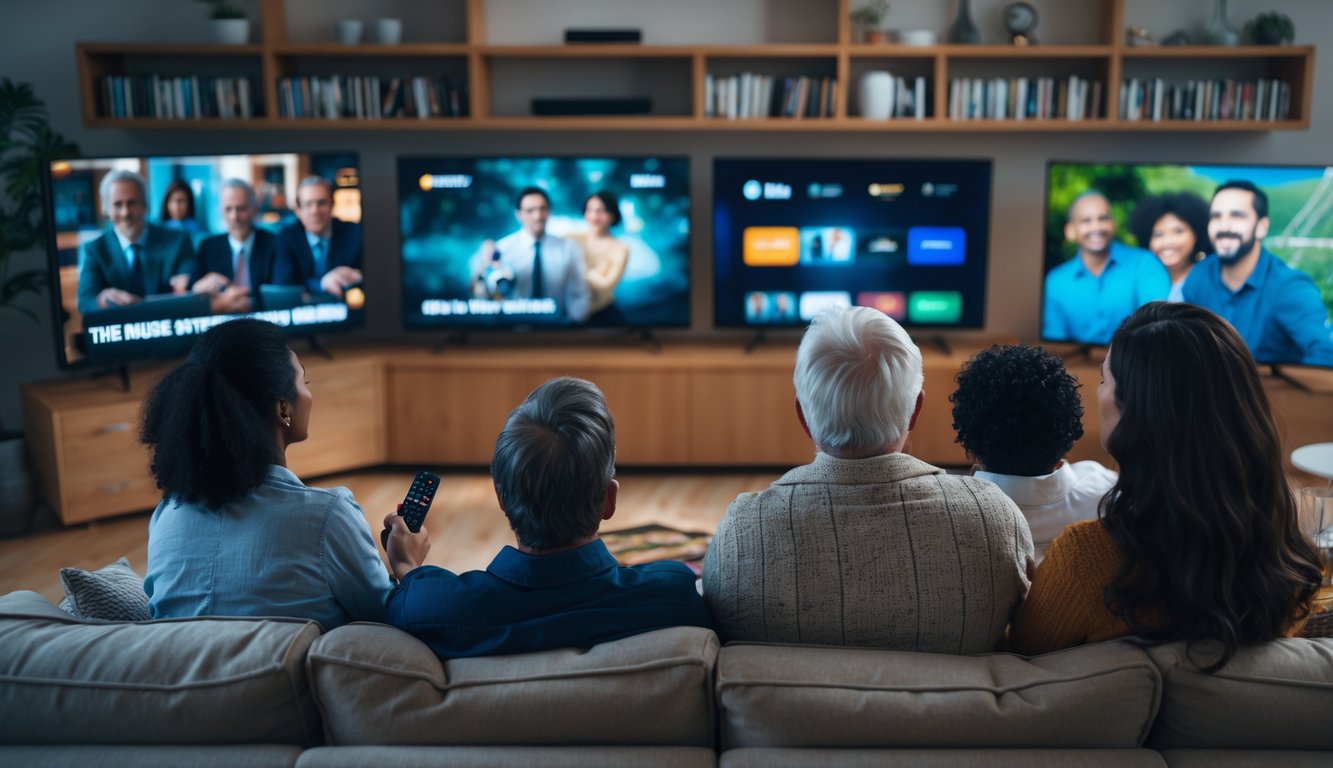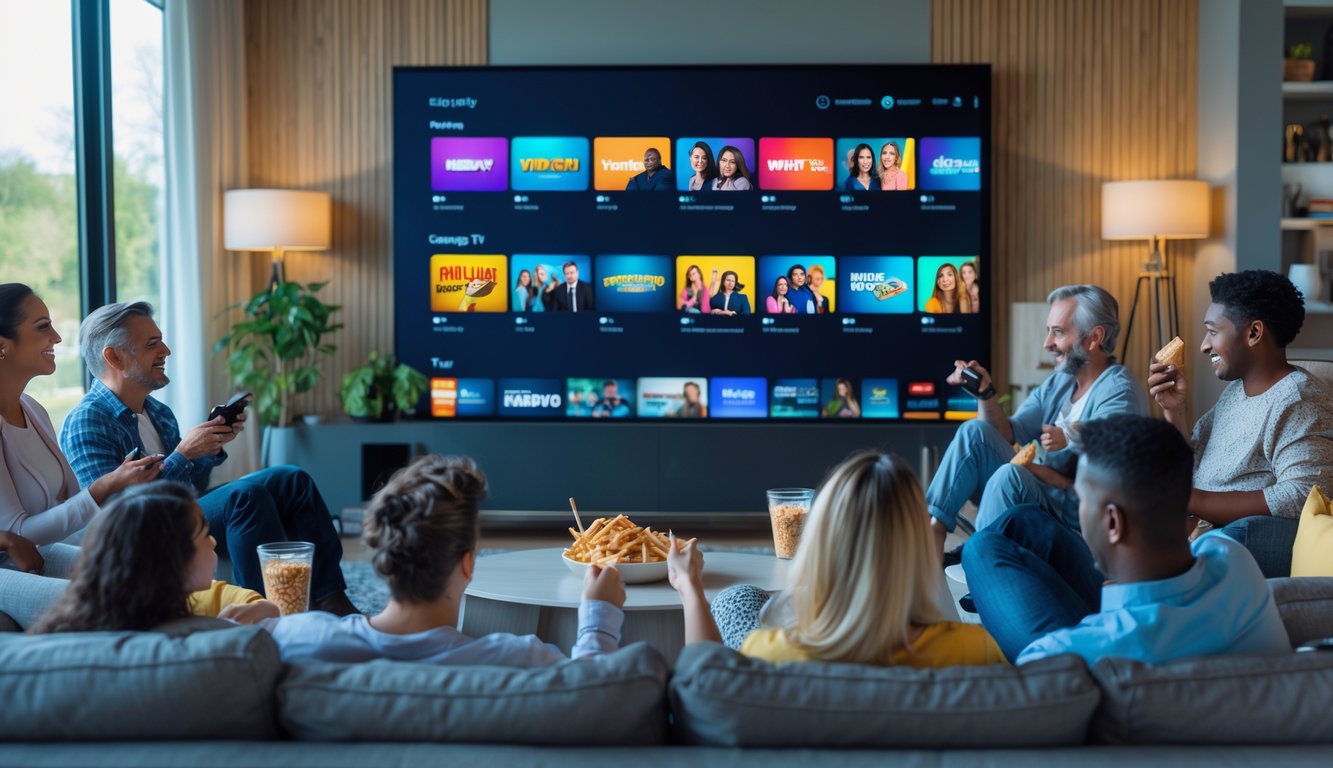
Streaming Platforms as Game Changers

What’s still making me nuts? Every time I open Netflix or Disney+, something’s different—genres shifting, old habits gone, cable basically fossilized. It’s not just hype. The way everyone (even my DVD-hoarding uncle) picks what to watch is less random than it looks, and the real winners? Streaming platforms, betting big on what we’ll click next.
Impact of Netflix, Disney+, and Amazon Prime
Ever notice how Netflix drops a new crime doc, and suddenly everyone’s talking about murder at dinner? It’s not a coincidence. Algorithms basically script what millions of us talk about now—Forbes even said so.
Disney+? People sign up for one Marvel spinoff, then get stuck on nostalgia cartoons or “The Mandalorian.” That show gets more Star Wars dad buzz than I ever expected. Amazon Prime? It’s like a streaming flea market—some European noir, a U.S. political thing, and then, out of nowhere, a new stand-up special from someone I thought disappeared in 2009. No idea why they mix genres so much. Comfort content works, but so do random investments in docuseries and international originals—every genre’s up for grabs.
On-Demand Content and Binge-Watching Habits
Honestly, I never thought “skip intro” would break my weekend, but I can’t remember how to not binge. Appointment TV—does anyone even remember channel guides?—is dead. On-demand means nobody follows the neat arc of a show anymore.
If you believe the numbers (and who doesn’t, unless they say something wild about pineapple pizza), over 70% of Gen Z wants content now—not just new releases, but cloud gaming, weird reruns, obscure indie stuff. Streaming services dump whole seasons at once, and suddenly I’m three shows deep, can’t remember where I started. It’s ruined water-cooler talk: either you get spoiled all at once or not at all.
Also, nobody agrees when “binge” starts—three episodes? A whole season? Just a few hours? I can’t keep it straight, and I don’t think anyone else can either.
Platform Competition and Original Content
Streaming wars, streaming wars, streaming wars—every headline, same panic, different day. But is it really about who’s got Friends reruns? Nah, it’s who’s gutsy (or bored?) enough to bankroll the weirdest original no one asked for. My search history is a mess and, somehow, each service just builds its own little gated community of “exclusives.” Sometimes I stumble into a gem, sometimes it’s a cheese-sculpting reality show. I mean, traditional TV’s toast, right? Now it’s just a contest: who’ll greenlight the next “what the hell is this?” trend.
Netflix? Fine, “Stranger Things” and “Queen’s Gambit”—those hit like a truck, and suddenly theaters look like Blockbuster. Disney+ keeps recycling old franchises, but then spins out originals to glue people to the brand. Amazon Prime? One day it’s “The Boys,” next day it’s an indie doc about competitive ironing. Studios keep betting on random genres or wild formats, praying something cracks the algorithm before we all wander off to the next shiny app. But honestly, does anyone care unless the algorithm shoves it in your face? Sometimes my recommendations get so specific it’s like they know about that one time I watched every dog movie from 2001. Creepy.
Evolving Viewer Engagement and Interactivity
So, this bartender (why is it always bartenders?) tells me TV engagement is dead. Not true, but also not false. Metrics are a joke—genres shift, attention is a myth, and I swear people connect with shows while half-paying attention, eating cereal, or doomscrolling Twitter. Feels less like “watching” than “existing near content.”
Social Media and Real-Time Audience Feedback
You ever watch something and, mid-episode, your screen starts yelling, “React now to change the outcome!”? Polls, live tweets, chat explosions—suddenly I’m part of the show, whether I want to be or not. Networks are obsessed with this stuff, trying to wrangle what 27% of viewers call peer recs—basically, my group chat now drives the plot. Is that good? Who knows.
Maria (she edits TV, never sleeps) says her team scrambles to re-edit if feedback tanks mid-broadcast. Bots flood the sentiment trackers, algorithms “personalize” content live—allegedly. But who checks if the algorithm’s right when a hashtag trends because someone misspelled the show’s name? The chaos is real, but nobody wants to admit how much of it is just vibes and panic.
Interactivity and Immersive Viewing Experiences
Let’s talk “Bandersnatch.” First time I’ve ever sweated over cereal. But is higher engagement just about endless choices? Apparently not. Brands keep forgetting: novelty wears off. Gamify the weather and I’ll probably just tune out.
Platforms track every pause, skip, or rewatch. All of them. If interactivity drops, some algorithm might toss in a bonus scene or live commentary that wasn’t planned (see this for the nerdy details). Even the news tries real-time polls now. But where’s the line between “immersive” and “please stop interrupting my movie with a quiz”? If my movie pauses at the climax, I’m grabbing my Game Boy.



